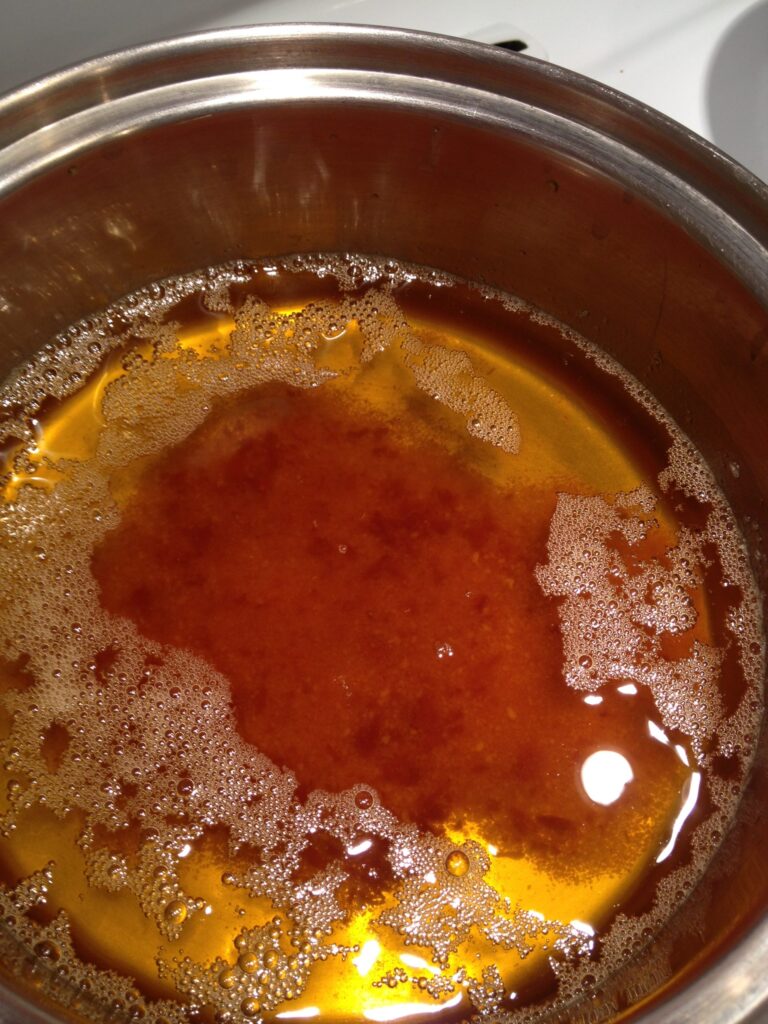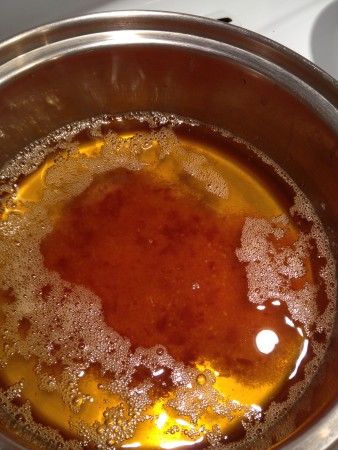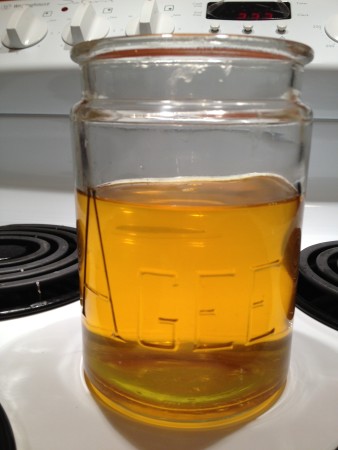According to Ayurveda, the ingestion of Ghee increases the most refined element of digestion, Ojas, which is the underlying basis of all immunity. Although not recommended for those with high cholesterol it is otherwise suitable for all Dosha though Pitta and Kapha must minimise their use of Ghee (and any oil they use).
Ghee is understood to increase the digestive fire but to do so without aggravating Pitta, instead it has a cooling and soothing effect. It is particularly beneficial for use by those with an aggravated Vata Dosha, and can be used both internally and externally.
How to make ghee:
- Take unsalted cultured butter out of the fridge and let it soften
- Put it in a small non-stick pan with very low heat to let it gradually melt
- Once melted increase heat and let it start to cook and boil – the boiling is caused by the water in the butter
- Keep stirring it and keep it between simmering and boiling, control the heat so you don’t burn the oil. As the boiling reduces it indicates that the water is getting less so start to reduce the heat
- Once the boiling and bubbling stops the water has gone and you will see a clear crystal gold oil and that is the ghee
- Later after it cools you will see some residue settle at bottom – these are milk solids and milk fat
- Once cool take a fine thin muslin cloth and tie it around the top of a glass jar and pour the ghee into it. Don’t touch for a couple of days, let it settle and it will emulsify. Keep it somewhere cool but not in the fridge. Slowly from liquid it will become solid
- It becomes the best cooking medium once all the water is removed and is one of the only oils that doesn’t burn at high temperatures. It also has natural preservative qualities and will keep a long time without refrigeration, is rejuvenating and has medicinal qualities both as a food and on the skin



